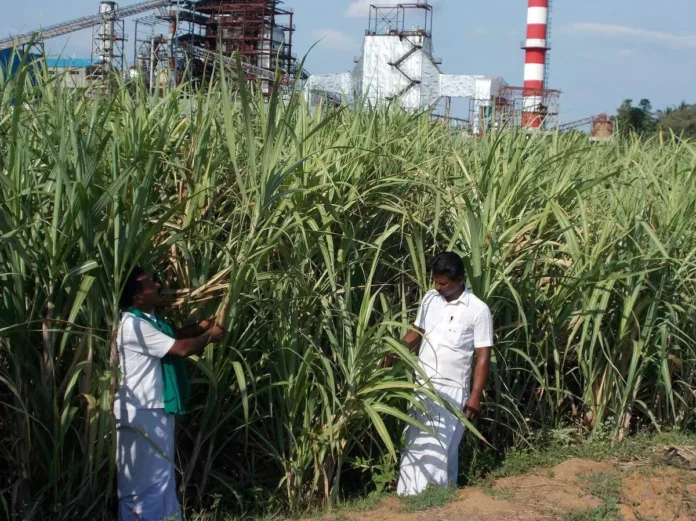Union Road and Transport Minister Nitin Gadkari set the alarm bells ringing recently when he said that sugarcane farmers will be left with no other option than to commit suicide if the sugar industry fails to divert sugarcane for ethanol production. The words may sound shocking, but diversion of sugarcane in to ethanol production could be a win-win for both farmers as well as for the energy security of the country.
Out of the total existing ethanol production capacity of 834.7 crore litres in India, two largest sugarcane producing States, Uttar Pradesh and Maharashtra account for 50 per cent capacity. Under the Ethanol Blended Petrol (EBP) programme these States have achieved blending of about 22 per cent of the total ethanol supply of 113.2 crore litre in 2021-22.
Maharashtra produced 126.48 lakh tonnes of sugar until April 15, 2022, compared with 103.95 lakh tons produced last year same period. This is almost 22.53 lakh tons higher than last year. In Uttar Pradesh, mills have produced 94.41 lakh tons of sugar. UP, Maharashtra and Karnataka contribute 75- 80 per cent of sugarcane in the country.
This season’s drought in Brazil affected sugar production and hence Indian sugar is in demand. “ But this situation will not remain the same next year and millers will have to pay farmers a full price of the cane even if the price of sugar comes down in the market. The sugar industry will collapse if the same amount of sugarcane and sugar is produced next year” Gadkari warned. The government has insisted that only ethanol could save the sugarcane industry and farmers.
How much ethanol is required?
The government has launched EBP Programme, wherein, Oil Marketing Companies (OMCs) sell petrol blended with ethanol up to 10 per cent. According to the government due to several supplies and demand-side interventions since 2014, ethanol blending quantity has improved from 38 crore litre in Ethanol Supply Year (ESY – period from December to November) 2013-14 to 302.3 crore litre in ESY 2020-21. The average ethanol blending percentage has also increased from 1.53 per cent to 8.1 per cent in the corresponding period.
US, Brazil, and Thailand have flexi-fuel vehicles. In Brazil, petrol: ethanol ratio is 53:47. In some States, the ratio is even 35:65. The NITI Aayog report on ethanol blending has estimated an ethanol demand of 1,016 crore litres in India based on expected vehicle growth. The sugar industry could be a major player in ethanol supply.
Sugar industry’s survival
According to the Indian Sugar Mills Association (ISMA), if India is a structural surplus sugar producer, it needs to export regularly. High cane prices make Indian sugar manufacturers uncompetitive and make them dependent on government subsidies for exports. With export subsidies not possible after 2023 (as per WTO), Indian mills will have to deal with a major problem.
ISMA says that the higher sugar production is due to significantly higher yields per hectare as also higher sugar recovery. The area under sugarcane has not seen any significant increase in the last few years. The higher yields and recoveries are due to better seed varieties and timely application of fertilisers and water, including good rainfall last year. Diversion of surplus sugar into ethanol will improve liquidity and checks the fall in sugar price.
The above news was originally posted on www.thehindubusinessline.com





